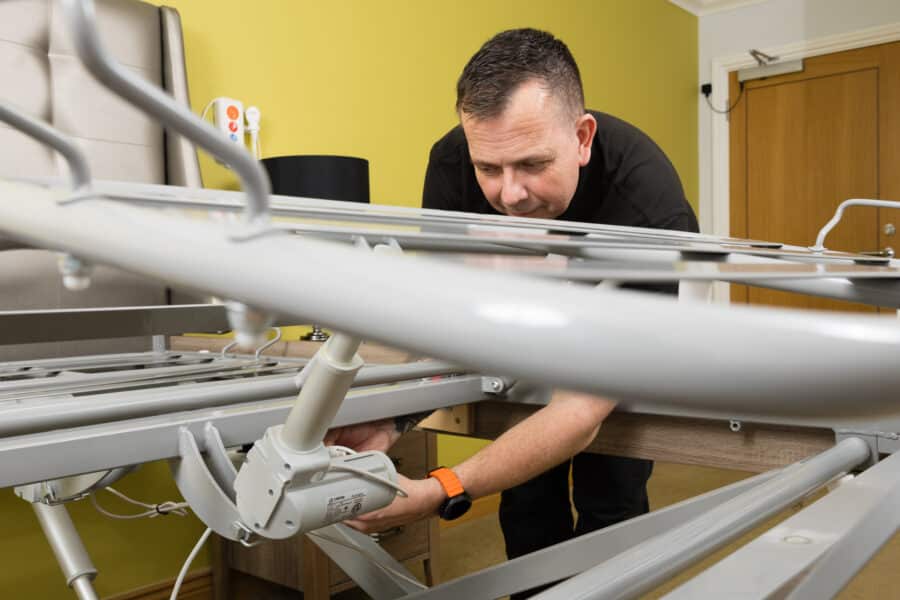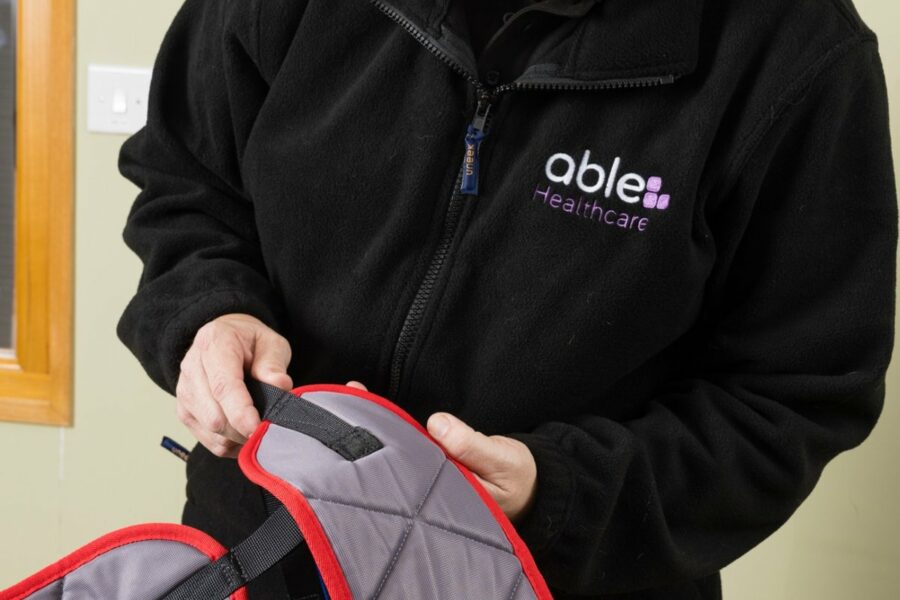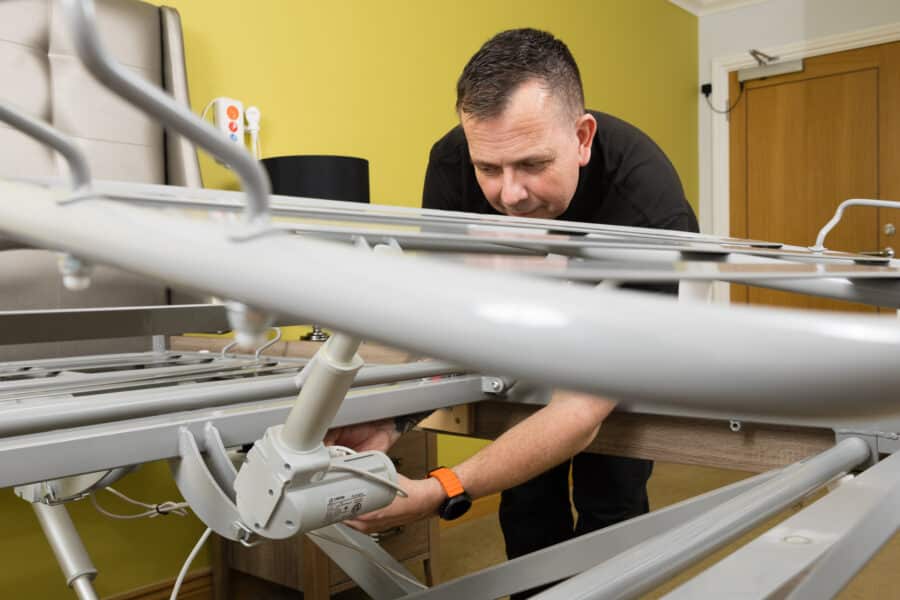Care homes rely on a variety of lifting equipment every day — from hoists to slings — to keep residents safe and comfortable. But using this equipment comes with a legal responsibility. Under the Lifting Operations and Lifting Equipment Regulations 1998 (LOLER), care homes must ensure that all lifting equipment is safe, well-maintained, and regularly inspected. Having a LOLER inspection checklist for care home can help avoid a failing LOLER inspection, limiting costly downtime, urgent repairs, and even enforcement action. The good news is that with the right preparation, your care home can pass inspections smoothly and keep residents protected.
Why LOLER Matters in Care Homes
LOLER is not just about ticking a compliance box. It’s about protecting residents, staff, and visitors from injury. The regulations apply to any equipment used for lifting people, which in care homes usually means:
-
Mobile hoists
-
Ceiling track hoists
-
Standing aids
-
Slings and lifting accessories
The law requires a thorough examination at least every six months for equipment used to lift people. This must be carried out by a competent person and documented in an official LOLER report.
For full details, visit the HSE LOLER guidance.
Your LOLER Inspection Checklist
By following this checklist, you can ensure that your lifting equipment meets LOLER requirements and is ready for inspection.
1. Keep Thorough Records
Maintain up-to-date documentation for every piece of lifting equipment, including:
-
The last inspection date
-
The next inspection due date
-
Any repairs or servicing completed
-
Manufacturer’s instructions
Keeping these records organised makes inspection day much smoother.
2. Inspect Equipment Between Services
Staff should visually check equipment before each use. Look for:
-
Frayed or worn sling straps
-
Damaged castors or wheels
-
Loose bolts or fittings
-
Battery charging issues
If you spot a problem, take the equipment out of use immediately and arrange repairs.
3. Schedule Timely Servicing
Never wait until inspection day to discover a fault. Booking equipment servicing and LOLER testing in advance ensures problems are fixed before they can delay compliance.
4. Store Equipment Safely
When not in use, hoists and slings should be stored in a clean, dry area. Damp conditions can lead to rust or fabric damage, both of which can result in a failed inspection.
5. Train Staff on Proper Use
Even the best-maintained equipment can become unsafe if used incorrectly. Regular staff training reduces wear and tear and improves safety during lifting operations.
Common Reasons Care Homes Fail LOLER Inspections
Avoid these pitfalls to keep your inspection record spotless:
-
Using damaged or frayed slings
-
Missing inspection reports
-
Overdue six-month checks
-
Ignoring minor faults until they become major issues
Remember — a failed inspection doesn’t just mean downtime. It could also lead to resident safety risks and regulatory action.
Benefits of Staying LOLER Ready
Care homes that stay proactive about LOLER compliance enjoy:
-
Better resident safety – Reduces risk of injury during transfers
-
Smoother operations – Avoids last-minute breakdowns or equipment shortages
-
Improved staff confidence – Staff can work more efficiently with reliable equipment
-
Positive inspection outcomes – Demonstrates a strong culture of safety and compliance
Final Thoughts
LOLER inspections are an essential part of running a safe, compliant care home. With a clear checklist, regular maintenance, and good record-keeping, you can avoid stress on inspection day and focus on providing excellent care.
If you’d like help preparing for your next inspection or booking your LOLER testing, complete the form below. Our equipment servicing and LOLER testing service ensures your care home stays compliant — and your residents stay safe.
LOLER Inspection Checklist for Care Homes FAQ’s
2) How often are LOLER inspections required?
At least every 6 months for equipment that lifts people. Lifting gear not used for people is usually every 12 months.
3) Which equipment in care homes is covered by LOLER?
Mobile hoists, ceiling track hoists, standing aids, slings and lifting accessories, and related patient-lifting components.
4) Who can carry out a LOLER inspection?
A competent person—someone with the training, experience, and independence to examine lifting equipment and produce the report.
5) What documents should we have ready?
Previous LOLER reports, service/repair records, manufacturer instructions, asset register (model/serial), and next-due dates.
6) What’s the difference between servicing and a LOLER inspection?
Servicing maintains/repairs equipment. A LOLER inspection is a legal safety examination and certification; both are needed.
7) How should we prepare before the inspector arrives?
Charge batteries, clean and label equipment, ensure slings are paired with the correct hoists, and remove damaged items from use.
8) What causes care homes to fail LOLER?
Frayed/damaged slings, overdue six-month checks, missing paperwork, loose/worn parts, and poor storage that leads to corrosion or damage.
9) What happens if we fail a LOLER inspection?
The item must be removed from service until repaired and re-examined. The report will state defects and required actions.
10) How long does a LOLER inspection take?
Depends on the number and type of assets. Most homes allow a few minutes per sling and 15–30 minutes per hoist as a guide.
11) How long should we keep LOLER records?
Keep each thorough-examination report until the next one is completed at minimum; many homes retain at least 2 years for audit trails.
12) Can Able help with repairs and scheduling?
Yes—Able can schedule inspections, perform repairs, and keep digital records so you never miss a due date.





